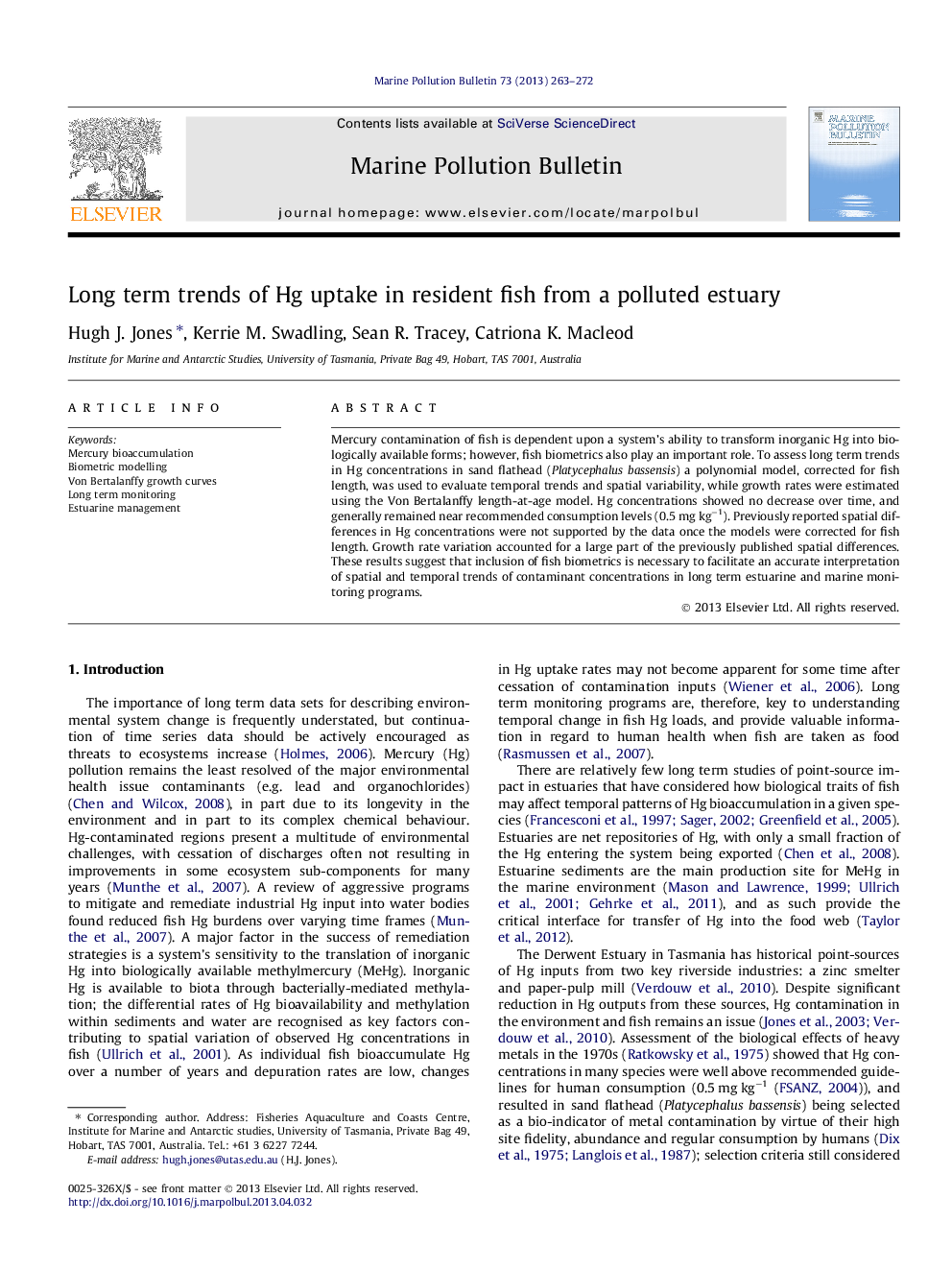| Article ID | Journal | Published Year | Pages | File Type |
|---|---|---|---|---|
| 6359452 | Marine Pollution Bulletin | 2013 | 10 Pages |
â¢Temporal models of Hg concentrations in estuarine fish over 37-years examined.â¢Models showed no temporal decline in fish Hg levels despite reduction of Hg inputs.â¢Interannual variation in Hg accounted for by fish length and growth rate variation.â¢Results highlight importance of biometric parameters in Hg monitoring programs.
Mercury contamination of fish is dependent upon a system's ability to transform inorganic Hg into biologically available forms; however, fish biometrics also play an important role. To assess long term trends in Hg concentrations in sand flathead (Platycephalus bassensis) a polynomial model, corrected for fish length, was used to evaluate temporal trends and spatial variability, while growth rates were estimated using the Von Bertalanffy length-at-age model. Hg concentrations showed no decrease over time, and generally remained near recommended consumption levels (0.5 mg kgâ1). Previously reported spatial differences in Hg concentrations were not supported by the data once the models were corrected for fish length. Growth rate variation accounted for a large part of the previously published spatial differences. These results suggest that inclusion of fish biometrics is necessary to facilitate an accurate interpretation of spatial and temporal trends of contaminant concentrations in long term estuarine and marine monitoring programs.
